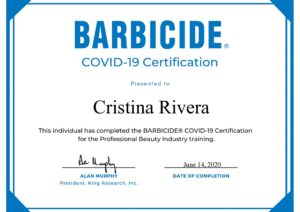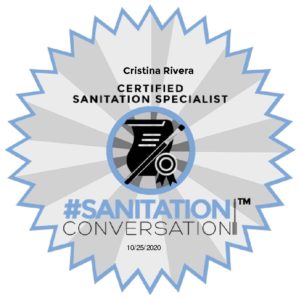“Building Your Perfect Beginner Makeup Kit: A Comprehensive Guide”

Makeup is an important part of your everyday life. It can help you feel more confident and beautiful, which is why it’s so important to have the right tools for the job. A basic makeup kit is essential for anyone who wants to learn how to apply makeup properly, or just wants some new products in their routine.
Here are some reasons why having a basic makeup kit is beneficial:
- You’ll be able to experiment with different styles and techniques without spending too much money on individual products (which can add up quickly).
- You’ll know exactly what products work best for you before investing in anything else!
Essential Products

- Foundation: This is a must-have for any beginner. The right foundation will help you achieve a flawless look, even if you’re not used to wearing makeup.
- Concealer: Even if your skin isn’t perfect and doesn’t need concealing, it’s still important to have concealer in your kit. It can be used as an eye shadow base or just on its own under the eyes for brightening effect!
- Blush: A blush adds color back into the face after applying foundation or concealer and helps bring out natural features like cheekbones or lips by adding depth and dimensionality to them!
- Eyeshadow: Eyeshadow comes in many different shades so it’s important that whatever shade(s) of eyeshadow work best with YOUR skin tone (and eye color). If possible try out different brands until find one which works best for YOU!
- Bronzer/Contour: This little gem is super important for bringing life back to your skin. When you’re starting out with learning how to do makeup, it’s easy to “flatten” your face with foundation and powder. Bronzer/Contour help bring dimension back.
- Eyeliner: This isn’t an essential for everyone. You can create a similar effect with eyeshadow. It just depends on the look you’re after whether or not you use eyeliner.
- Mascara: Mascara is a makeup item that can be used all on its own and make you look awake and alert. A few coats of your mascara as a finishing touch or alone can make or break your whole look.
Tools
- Mirror (there’s no getting past this one, you need it)
- Makeup Brushes (for foundation, blush, powder and eyeshadow) stay tuned for a post on which brushes you need!
- Sponges (for applying concealer and, blending your foundation)
- Cotton Pads (for removing excess makeup)
- Tweezers (to remove stray hairs from your face or eyebrows)
- Eyelash Curler
Choosing the Right Products

Choosing the right products for your skin type is essential to getting a good look. The best way to do this is by trying out different brands and colors, but here are some general guidelines:
- Skin tone: If you have oily or dry skin, choose a foundation that’s matte (not shimmery) and has SPF protection. If you have normal or combination skin, go with something in between–something that’s not too matte but also doesn’t contain too much shimmer.
- Shade: Make sure the color matches your natural tone as closely as possible; if it doesn’t match perfectly at first, try again with another shade until you find one that works well enough for everyday use.
- Coverage: If you want full coverage from head-to-toe (and who doesn’t?), then choose something thick enough so that it covers blemishes without looking cakey on top of them!
Choosing the Right Tools
Choosing the right tools is essential to creating a flawless look. The makeup brush you use will determine how your foundation looks and feels on your skin, so it’s important to pick one that works for you.
If you’re just starting out with makeup, there are some things to consider:

- Brush types – Brushes come in different shapes and sizes, depending on what they’re used for. For example:
- Angled brushes are great for contouring because they can easily reach around the nose area or under eyes without getting too close (which would cause streaking).
- Flat top kabuki brushes are perfect for applying powder evenly across large areas of skin like cheeks or forehead; smaller sized kabukis work best around smaller areas like under eyes or around lips because they’ll give more precise coverage than larger ones would provide.*
- Sponge types – Sponges can also be used instead of brushes if desired! They tend not last as long but do offer less mess when applying liquid products like foundation or concealer.*
- Note* Quality – When choosing, be sure to choose a good quality tool over cheap knock-offs. This will make all difference between having an average looking face versus looking amazing all day long!
Putting Together Your Kit

- Organizing your kit
- Choosing colors and shades
- Storing your kit
Tips for Beginners
Here are some tips for beginners:
- Start small. Don’t go out and buy a ton of products at once, especially if you’re just getting started. Instead, pick one or two items from each category (foundation, blush) and experiment with them until you find what works best for your skin type and coloring.
- Experiment! You don’t know what works for you unless you try it out yourself–and even then there’s always room for improvement! If something doesn’t work out quite right at first glance (or second glance…or third), don’t give up on it just yet–maybe there’s another way to use it that will work better than the original application method did? There’s no harm in experimenting until something clicks! If you’re still stuck, feel free to leave me a comment here or on my YouYube Channel and I can make a video JUST FOR YOU answering your question.
- Practice makes perfect! The more often we practice our makeup skillset (whether we’re trying new techniques or perfecting old ones), the better we’ll get at applying them quickly and efficiently while still getting quality results every single time without fail…which brings us neatly onto our next point: invest in quality tools/products because nothing beats investing money into things which will last longer than cheap knockoffs made with substandard materials.”
Conclusion
So, what have we learned?
- Having a basic makeup kit is a great way to start building your collection. You can use these products for everyday wear and experiment with them, or you can choose to use them as an alternative to full-size products when traveling.
- A good-quality brush set is essential for applying foundation and powder. It’s also useful for blending concealer under the eyes and around the nose, as well as blending out lip color after it’s applied (if you don’t want too much shine).
- The most important thing about creating a basic makeup kit is finding products that work well together! Make sure that all of your brushes are compatible with each other before buying them–you don’t want any surprises later on down the road! All this means is that you don’t want to mix cheap brushes that will shed with quality brushes that don’t or rarely do. Trying to get that stray brush hair off of a perfectly made up face and risk ruining all that hard work.
Resources

To get you started, here are some resources to help you learn more about makeup and find products that will suit your needs:
- Makeup tutorials. My YouTube channel has a bunch of videos that teach how to do everything from basic foundation application to advanced contouring techniques. You can also find tutorials for specific products like eyeliner or lipstick that show how they’re used in different looks.
- Product reviews. If you want to know more about a certain product before buying it, check out reviews on sites like Amazon or Ulta’s website (or even our own). These will give an overview of what people think about each item–and whether it works well as part of a kit like this one!


.png?resize=70%2C70)



